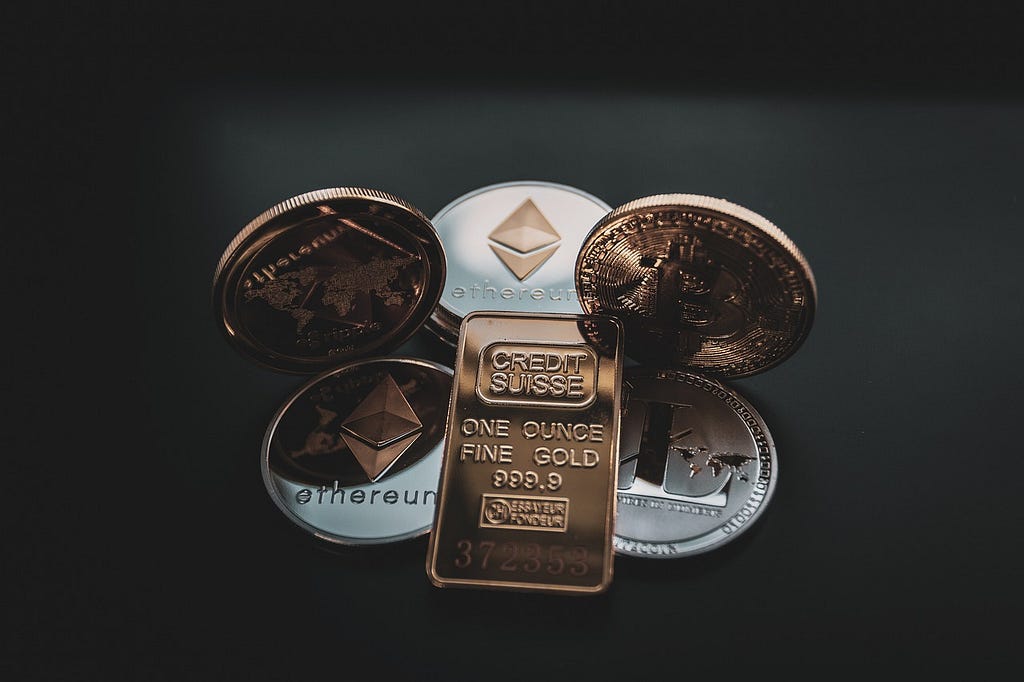Bitcoin has long been the dominant player. However, a diverse ecosystem of alternative cryptocurrencies, known as altcoins, has emerged to address Bitcoin’s limitations and offer innovative solutions to various challenges. This article delves into the world of altcoins, exploring their significance, business models, and how they generate value in the cryptocurrency ecosystem.

A brief history of Altcoins
The term “Altcoin” refers to all cryptocurrencies other than Bitcoin. The first altcoins began to emerge in 2011, a few years after the creation of Bitcoin. The first was Namecoin, which aimed to use blockchain technology for decentralized domain name registration. Since then, thousands of altcoins have been created, each aiming to carve out its unique niche or improve upon aspects where Bitcoin may fall short.
Altcoins can differ from Bitcoin in a variety of ways. Some have different underlying algorithms, such as Ethereum’s Ethash or Litecoin‘s Scrypt, while others offer more advanced features or capabilities, such as smart contracts in Ethereum or privacy features in Monero. A significant portion of altcoins are also tokens created on top of other blockchain platforms, such as Ethereum‘s ERC-20 tokens or Binance Chain‘s BEP-2032 tokens.
The role of altcoins in the broader cryptocurrency market has grown dramatically since their inception. Many projects have developed large, active communities and have begun to see mainstream adoption. Moreover, Initial Coin Offerings (ICOs), a fundraising method for blockchain projects where new tokens are sold to investors, have further boosted the creation and popularity of altcoins.
Understanding Altcoins
Altcoins, a portmanteau of “alternative” and “coin,” encompass all cryptocurrencies other than Bitcoin. These digital currencies were developed to address perceived limitations of Bitcoin and to offer additional features and functionalities.
While Bitcoin is often seen as a store of value, akin to digital gold, many altcoins are designed with specific use cases in mind, such as smart contracts, privacy, or faster transaction processing.The relationship between Bitcoin and altcoins is dynamic and complex. Altcoins often react to Bitcoin’s market movements, but they also strive to carve out their own niches and value propositions. This diversity has led to a rich ecosystem of cryptocurrencies, each with unique features and purposes.
Altcoin business models
The business model of an altcoin can vary greatly based on the underlying technology and the goal of the project. In a generalized sense, altcoins operate in a similar way to Ethereum, which is the most popular altcoin. They can be considered a form of digital platform or infrastructure that provides various services to users. These services can include enabling transactions, supporting decentralized applications, facilitating smart contracts, or providing a means of value storage, among others.
In the case of altcoins like Litecoin, the business model is straightforward. Litecoin acts as a digital currency, allowing users to send, receive, and store value. Users pay transaction fees to incentivize miners to secure the network and verify transactions.
Altcoins like Ethereum or Binance Smart Chain go a step further, providing a platform for decentralized applications. They operate in a similar way to an operating system in traditional computing, allowing developers to build and run applications on their blockchain. The altcoin, in this case, is used to pay for transactions, deploy smart contracts, or interact with dApps on the network.
In return for securing the network and processing transactions, miners or validators in these networks are rewarded with new coins, a process known as block rewards, and transaction fees. This is similar to the way Bitcoin operates.
Top Altcoins and Their Business Models
Let’s explore some of the top altcoins by market capitalization and their business models:
1. Ethereum (ETH)
Ethereum is the most prominent altcoin and the second-largest cryptocurrency by market capitalization. Its primary innovation is the introduction of smart contracts, which are self-executing contracts with the terms of the agreement directly written into code. Ethereum’s business model revolves around providing a platform for decentralized applications (dApps) and decentralized finance (DeFi) projects.
Revenue Generation:
- Transaction fees (gas fees) for executing operations on the network
- Staking rewards in the Ethereum 2.0 proof-of-stake model
2. Binance Coin (BNB)
BNB is the native cryptocurrency of the Binance ecosystem, one of the world’s largest cryptocurrency exchanges. It serves multiple purposes within the Binance platform and beyond.
Revenue Generation:
- Trading fee discounts on the Binance exchange
- Participation in token sales on Binance Launchpad
- Transaction fees from Binance Card
- Periodic token burns to reduce supply and potentially increase value
3. Cardano (ADA)
Cardano is a blockchain platform known for its research-driven approach and focus on sustainability and scalability. It uses a proof-of-stake consensus mechanism, which is more energy-efficient than Bitcoin’s proof-of-work system.
Revenue Generation:
- Transaction fees
- Staking rewards for ADA holders who participate in network validation.
4. Solana (SOL)
Solana is known for its high throughput and low transaction costs, making it popular for DeFi applications and non-fungible tokens (NFTs). Its unique Proof of History (PoH) consensus mechanism enhances efficiency and scalability.
Revenue Generation:
- Transaction fees
- Staking rewards
5. Ripple (XRP)
Ripple focuses on facilitating fast and cost-effective cross-border payments, aiming to replace traditional systems like SWIFT. It uses a consensus protocol that does not require mining, reducing energy consumption.
Revenue Generation:
- Transaction fees for using the RippleNet network
- Partnerships with financial institutions
The primary currency for transactions

Like Ethereum, the primary currency for transactions on most altcoin networks is the altcoin itself. For example, on the Cardano network, ADA is used to pay for transactions and to stake in the network‘s consensus mechanism. Similarly, on the Binance Smart Chain, BNB is used to pay for transactions.
Supplying the altcoin typically involves participating in the network‘s consensus mechanism. For Proof of Work (PoW) networks like Litecoin, this involves mining, where miners solve complex mathematical problems to add new blocks to the blockchain. For PoS networks like Cardano, supplying the network involves staking, where participants lock up a certain amount of their cryptocurrency to support the network‘s operations, validate transactions, and help secure the blockchain, often in exchange for earning additional cryptocurrency as rewards.
Significance in the Cryptocurrency Ecosystem
Altcoins play a crucial role in expanding the functionality and application of blockchain technology beyond what Bitcoin initially offered. They drive innovation, experimentation, and competition within the cryptocurrency space, leading to advancements in areas such as:
- Decentralized Finance (DeFi): Altcoins like Ethereum have become the backbone of the DeFi movement, enabling financial services without intermediaries.
- Smart Contracts: Many altcoins support smart contracts, allowing for the creation of complex decentralized applications and automated agreements.
- Interoperability: Projects like Polkadot aim to enable different blockchains to interoperate, facilitating the transfer of data and value across chains.
- Scalability Solutions: Altcoins often experiment with new consensus mechanisms and technologies to address scalability issues faced by older cryptocurrencies.
- Specialized Use Cases: Some altcoins focus on specific industries or applications, such as privacy-focused transactions or supply chain management.
Recent Developments and Trends
The altcoin market is characterized by rapid innovation and evolving trends. Recent developments include:
- Altcoin Season: Periods when altcoins outperform Bitcoin, driven by market enthusiasm and increased investor interest.
- Technological Innovations: Integration of artificial intelligence with blockchain technology, as seen in projects like Lightchain AI.
- Regulatory Scrutiny: Increased attention from regulatory bodies, impacting market dynamics and prompting some companies to explore operations in different jurisdictions.
- Environmental Concerns: Growing focus on energy-efficient consensus mechanisms to address the environmental impact of cryptocurrency mining.
- Community and Ecosystem Development: The importance of active and engaged communities in driving the success and adoption of altcoin projects.
Risks and Benefits of Investing in Altcoins
While altcoins offer potential high returns and exposure to innovative technologies, they also come with significant risks. Benefits include portfolio diversification and the opportunity to invest in groundbreaking projects at an early stage. However, investors must be aware of risks such as high volatility, low liquidity, potential scams, regulatory uncertainties, and technological vulnerabilities.
Conclusion
Altcoins have become an integral part of the cryptocurrency ecosystem, offering diverse functionalities and business models that cater to various needs within the digital economy.
From smart contract platforms like Ethereum to specialized payment solutions like Ripple, altcoins are driving innovation and expanding the possibilities of blockchain technology.
As the crypto landscape continues to evolve, altcoins will likely remain a vital component of the digital economy, driving innovation and value creation. However, potential investors should conduct thorough research, understand the underlying technologies, and carefully assess the risks before venturing into the altcoin market.
The future of altcoins looks promising, with ongoing developments in areas such as DeFi, NFTs, and cross-chain interoperability. As these projects mature and find real-world applications, they have the potential to reshape various industries and create new paradigms of value exchange in the digital age.
Subscribe to my newsletter today!
If you like my work and want me to keep you updated with this, You can buy me a coffee.
Altcoins and Their Business Models: Shaping the Future of Cryptocurrency was originally published in The Capital on Medium, where people are continuing the conversation by highlighting and responding to this story.
from The Capital - Medium https://ift.tt/hIVsFrL
0 Comments